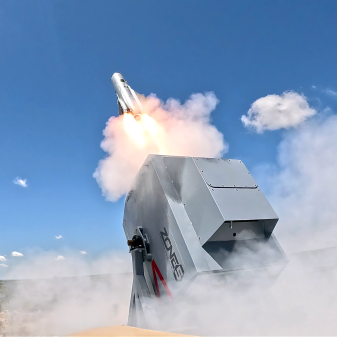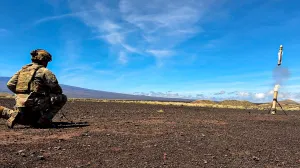DOD taps ‘integrated software enablers’ to help fully realize ambitious Replicator plans

As insiders hustle to realize high-stakes efforts to accelerate the military’s adoption of advanced uncrewed capabilities — including Replicator — the Pentagon is increasingly buying integrated software enablers to equip such systems with the capacity to link up and work together autonomously.
Deputy Defense Secretary Kathleen Hicks shed new light on this work in a press release Wednesday.
In it, she also spotlighted the various products tapped for rapid delivery in the second tranche of the unfolding Replicator initiative, which Hicks conceptualized to help counter China’s massive, ongoing military buildup by incentivizing speedy domestic manufacturing of in-demand military assets through replicable processes.
She noted Wednesday that, through Replicator and other autonomy-pushing efforts, the Pentagon is starting to harness these enablers or “resilient decision-making architectures for collaborative autonomy teaming” that can essentially synchronize up to thousands of uncrewed capabilities in a secure and shared environment.
“These ‘integrated enablers’ are enhancing the ability of Replicator systems to operate and collaborate autonomously, and to remain resilient in the face of jamming and other countermeasures. The Department is acquiring many of these integrated software enablers using Commercial Solutions Openings led by the Defense Innovation Unit (DIU) that streamline and accelerate onramps for commercial industry,” Hicks wrote.
“Announcement of these awards is forthcoming,” the deputy confirmed.
In the release, Hicks also for the first time officially confirmed all of the unclassified systems tapped in the second Replicator tranche, deemed 1.2.
As DefenseScoop previously reported, this tranche includes Anduril Industries’ quiet and modular Ghost-X aerial drones via the Army’s Company-Level Small Uncrewed Aerial Systems effort — and multiple vendors, including Anduril, that have and will be selected in partnership with the Air Force’s Enterprise Test Vehicle.
“In many ways, Anduril was founded specifically to achieve the stated goals of the Replicator initiative: to accelerate the development, production, acquisition, and employment of large numbers of affordable, attritable autonomous systems. Across our business, we are delivering transformative, software-defined solutions at speed to ensure that warfighters have the capabilities they need, when they need them,” an Anduril spokesperson told DefenseScoop on Wednesday.
Hicks said in her announcement that the Pentagon is also “scaling loitering munitions through fielding and expanded experimentation” of Anduril’s Altius-600, and separately the Performance Drone Works C-100 UAS.
“Replicator 1.2 also includes additional systems that remain classified, including low-cost long-range strike capabilities and maritime uncrewed systems,” Hicks wrote.
DefenseScoop reported in August that Anduril’s Dive-LD autonomous underwater vehicles were selected to be quickly mass-produced in the second Replicator tranche.
Since Replicator’s launch in August 2023, DOD leaders and officials involved have been expressly tight-lipped — frequently citing security concerns — about the ambitious plan and how it’s panning out. The Pentagon’s Office of Inspector General recently revealed it is conducting a comprehensive assessment of Replicator.
In her latest announcement, Hicks again committed to fielding these drone swarms and associated systems by August 2025 — as originally envisioned.
More than 500 commercial firms were considered for Replicator hardware and software contracting and major subcontracting opportunities across the first and second tranches, she noted, and awards have so far been made to more than 30 hardware and software companies and more than 50 subcontractors.
“The Replicator initiative is demonstrably reducing barriers to innovation, and delivering capabilities to warfighters at a rapid pace,” Hicks wrote.






